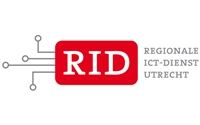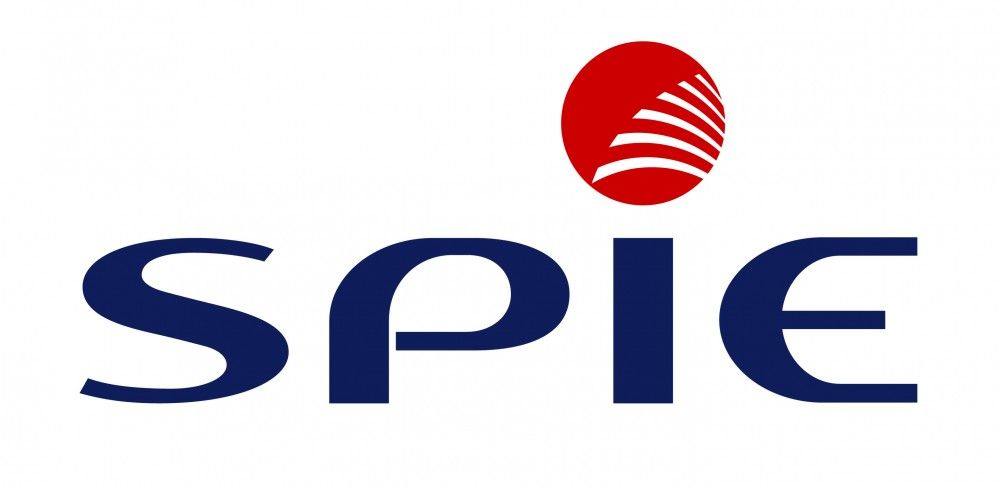Cursusbeschrijving
This 5-day course describes how to assess operating system and application deployment options, determine the most appropriate deployment strategy, and then implement a lite-touch or zero-touch deployment solution for Windows devices and apps. Solutions covered in this course include operating system deployment scenarios using the Microsoft Deployment Toolkit (MDT) and System Center 2012 R2 Configuration Manager.
{tab Doelgroep}
This course is intended for IT professionals who deploy, manage, and maintain PCs, devices, and apps across medium/large/enterprise organizations, and for individuals who are interested in taking exam 70-695.
{tab Voorkennis}
- Networking fundamentals, including common networking protocols, topologies, hardware, media, routing, switching and addressing.
- Active Directory Domain Services (AD DS) principles and fundamentals of AD DS management.
- Installation, configuration, and troubleshooting for Windows-based personal computers.
- Basic concepts of Public Key Infrastructure (PKI) security.
- Basic understanding of scripting and Windows PowerShell syntax.
- Basic understanding of Windows Server roles and services.
- Basic understanding of management tasks using System Center 2012 R2 Configuration Manager.
{tab Certificering}
This course helps to prepare for exam 70-695, Deploying Windows Devices Enterprise and Apps.
{tab Overige informatie}
This course will be delivered with digital courseware. In order to have the best learning experience you are asked to bring your own second screen to view the courseware. A second screen includes: tablets and laptops.
{/tabs} {slider Cursusinhoud|closed}
Module 1: Assessing the Network Environment for Supporting Operating System and Application Deployment
This module provides an overview of the enterprise desktop life cycle. It explains how to assess hardware and infrastructure readiness for a desktop deployment, and how to use the Microsoft Assessment and Planning Toolkit (MAP) to assess deployment readiness.
- Overview of the Enterprise Desktop Life Cycle
- Assessing Hardware and Infrastructure Readiness for a Desktop Deployment
- Using MAP to Assess Deployment Readiness
Lab : Assessing the Network Environment for Supporting Operating System and Application Deployment
- Collecting Hardware and Application Inventory by Using Configuration Manager
- Determining Infrastructure Readiness by Using MAP
After completing this module, students will be able to:
- Describe the enterprise desktop life cycle
- Assess hardware and infrastructure readiness for a desktop deployment
- Use MAP to assess deployment readiness
Module 2: Determining Operating System Deployment Strategies
This module explains how to identify the most appropriate operating system deployment strategy based upon organizational requirements. It describes tools and deployment strategies, different types of operating system deployments, and alternative deployment strategies for desktop computers.
- Tools and Deployment Strategies for an Effective Operating System Deployment Strategy
- Operating System Deployment Using High-Touch with Retail Media
- Operating System Deployment Using High-Touch with Standard Image
- Operating System Deployment Using Lite-Touch
- Operating System Deployment Using Zero-Touch
- Alternative Deployment Strategies for Windows Desktops
Lab : Determining Operating System Deployment Strategies
- Identifying Operating System Deployment Strategies for a Small Network
- Identifying Operating System Deployment Strategies for a Medium-Sized Network
- Identifying Operating System Deployment Strategies for an Enterprise Network
- Installing the Windows Automated Deployment Kit
After completing this module, students will be able to:
- Describe tools and strategies for an effective operating system deployment strategy.
- Describe operating system deployment using high-touch with retain media.
- Describe operating system deployment using high-touch with standard image.
- Describe operating system deployment using lite-touch.
- Describe operating system deployment using zero-touch.
- Describe alternative deployment strategies for Windows desktops.
Module 3: Assessing Application Compatibility
This modules explains how to assess application compatibility issues and identify mitigation solutions to ensure that applications function successfully after an operating system deployment. It also describes how to use ACT to address application compatibility issues.
- Diagnosing Application Compatibility Issues
- Mitigating Application Compatibility Issues
- Using ACT to Address Application Compatibility Issues
Lab : Assessing Application Compatibility
- Analyzing Applications for Potential Compatibility Issues
- Mitigating Application Compatibility Issues
After completing this module, students will be able to:
- Diagnose application compatibility issues.
- Mitigate application compatibility issues.
- Use ACT to address application compatibility issues.
Module 4: Planning and Implementing User State Migration
This module describes user state migration strategies, and explains how to configure these strategies during operating system deployments.
- Overview of User State Migration
- Overview of USMT 5.0
- Planning User State Migration
- Migrating User State by Using USMT
Lab : Planning and Implementing User State Migration
- Planning for User State Migration
- Creating and Customizing USMT XML Files
- Capturing and Restoring User State by Using USMT
After completing this module, students will be able to:
- Describe user state migration.
- Identify the features of USMT 5.0.
- Plan user state migration.
- Migrate user state by using USMT.
Module 5: Determining an Image Management Strategy
This module describes the Windows image file format, and provides an overview of image management. It also explains how to determine the most appropriate image management strategy to support operating system and application deployments.
- Overview of the Windows Image File Format
- Overview of Image Management
Lab : Determining an Image Management Strategy
- Assessing Business Requirements to Support an Image Management Strategy
After completing this module, students will be able to:
- Describe the purpose and benefits of the Windows image file format.
- Describe image management.
Module 6: Preparing For Deployments Using Windows ADK
This module describes the tools provided in Windows ADK, and explains how to use them to prepare for and support automated deployment strategies.
- Overview of the Windows Setup and Installation Process
- Preparing Boot Images Using Windows PE
- Automating and Preparing the Installation of an Image Using Windows SIM and Sysprep
- Capturing and Servicing a Reference Image
Lab : Preparing the Imaging and Windows PE Environment
- Configuring a Custom Windows PE Environment
Lab : Building a Reference Image by Using Windows SIM and Sysprep
- Building Custom Answer Files by Using Windows SIM
- Installing a Reference Computer by Using a Custom Answer File
- Customizing Image in Audit Mode and Preserve the Profile Changes Using Sysprep
Lab : Capturing and Servicing a Reference Image
- Capturing a Reference System Image
- Servicing a Reference Image
After completing this module, students will be able to:
- Describe the Windows installation process.
- Describe how to use and customize Windows PE.
- Use Windows SIM and Sysprep to automate and prepare images.
- Capture and service a reference image.
Module 7: Supporting PXE-Initiated and Multicast Operating System Deployments
This module explains how to identify solutions to support PXE-initiated and multicast solutions when performing operating system deployment tasks. It also describes the process of installing and configuring the Windows DS environment.
- Overview of PXE-Initiated and Multicast Operating System Deployments
- Installing and Configuring the Windows DS Environment
Lab : Configuring Windows DS to Support PXE and Multicast Operating System Deployments
- Planning the Windows DS Environment
- Installing and Configuring the Windows DS Server Role
After completing this module, students will be able to:
- Describe PXE-initiated and multicast operating system deployments.
- Explain the process for installing and configuring the Windows DS environment.
Module 8: Implementing Operating System Deployment by Using the Microsoft Deployment Toolkit
This module explains how to configure an operating system deployment strategy using the Microsoft Deployment Toolkit. It describes how to plan for the MDT environment, implement MDT 2013, and integrate Windows DS with MDT.
- Planning for the MDT Environment
- Implementing MDT 2013
- Integrating Windows DS with MDT
Lab : Operating System Deployment using the Microsoft Deployment Toolkit
- Planning for the MDT Environment
- Installing MDT 2013 and Prerequisites
- Creating and Configuring the MDT 2013 Deployment Share
- Deploying and Capturing a Reference Operating System Image
After completing this module, students will be able to:
- Describe the MDT components and process for a lite-touch deployment strategy.
- Install and configure the MDT environment.
- Describe how you can configure Windows DS to integrate with MDT 2013.
Module 9: Implementing Operating System Deployment by Using System Center 2012 R2 Configuration Manager
This module describes operating system deployment, and the process of preparing the site for operating system deployment. It also explains how to configure an operating system deployment strategy using System Center 2012 R2 Configuration Manager.
- Overview of Operating System Deployment
- Preparing the Site for Operating System Deployment
- Deploying an Operating System Image
Lab : Preparing the Site for Operating System Deployment
- Managing Site System Roles Used to Support Operating System Deployment
- Managing Packages to Support Operating System Deployment
Lab : Deploying Operating System Images for Bare-Metal Installations
- Preparing the Operating System Image
- Creating a Task Sequence to Deploy an Image
- Deploying an Image
After completing this module, students will be able to:
- Describe operating system deployment.
- Prepare the site for operating system deployment.
- Deploy an operating system image.
Module 10: Integrating MDT and Configuration Manager for Operating System Deployment
This module explains how to integrate MDT with Configuration Manager to support operating system deployment procedures. It also reviews the features provided by integrating MDT and Configuration Manager.
- Integrating Deployment Tools with Configuration Manager
- Reviewing the Features Provided by Integrating MDT and Configuration Manager
Lab : Integrating MDT and Configuration Manager for Operating System Deployment
- Integrating MDT and Configuration Manager
- Creating an MDT Boot Disk
- Creating and Deploying an MDT Task Sequence Using Configuration Manager
After completing this module, students will be able to:
- Describe the integration of deployment tools with Configuration Manager.
- Describe the features provided by integrating MDT and Configuration Manager.
Module 11: Activating Clients and Managing Additional Configuration Settings
This module explains how to implement volume license activation and determine configuration settings for client computers. It also describes the different volume license activation solutions.
- Volume License Activation Solutions
- Determining Additional Configuration Client Settings
Lab : Configuring Additional Settings for Computer Clients
- Creating a Common Windows Start Screen and Custom Power Plan
- Creating a Client Preferences GPO
After completing this module, students will be able to:
- Describe volume activation solutions.
- Determine additional configuration client settings.
Module 12: Deploying Office 2013
This module explains how to customize and deploy Microsoft Office 2013 to an enterprise network environment. It describes the methods for deploying Office 2013, customizing Office deployments, and deploying Office 2013 from Office 365.
- Methods for Deploying Microsoft Office 2013 Editions
- Customizing Office Deployments
- Deploying Office 2013 from Office 365
- Considerations for Deploying Office 2013 Using App-V
- Managing Office Settings
Lab : Deploying Microsoft Office 2013 Using the Office Customization Tool
- Using OCT to Customize an Office 2013 Deployment
- Deploying a Click-to-Run version of Office 2013
After completing this module, students will be able to:
- Describe the methods for deploying Microsoft Office 2013 editions.
- Customize Office deployments.
- Deploy Office 2013 from Office 365.
- Describe considerations for deploying Office 2013 using App-V.
- Manage Office settings.
{slider Doelstellingen}
- Assess the network environment for supporting operating system and application deployment.
- Determine operating system deployment strategies.
- Assess application compatibility.
- Plan and implement user state migration.
- Determine an image management strategy.
- Prepare for deployments using the Windows Assessment and Deployment Kit (Windows ADK).
- Support PXE-initiated and multicast operating system deployments.
- Implement operating system deployment by using the MDT.
- Implement operating system deployment by using System Center 2012 R2 Configuration Manager.
- Integrate MDT and Configuration Manager for operating system deployment.
- Activate clients and manage additional configuration settings.
- Deploy Office 2013.
{/sliders}
Heeft u binnen uw organisatie een groep cursisten die graag willen deelnemen aan deze MCSE Deploying Windows Devices and Enterprise Apps training, dan is het financieel aantrekkelijk om deze cursus bij u op locatie te organiseren. Vraag een vrijblijvende offerte voor de MCSE Deploying Windows Devices Enterprise and Apps training.
Meer weten over dit onderwerp?
We verzorgen verschillende verschillende cursussen! Laat hieronder uw gegevens achter en we sturen u vrijblijvend een uitgebreid overzicht toe met alle mogelijkheden.


























